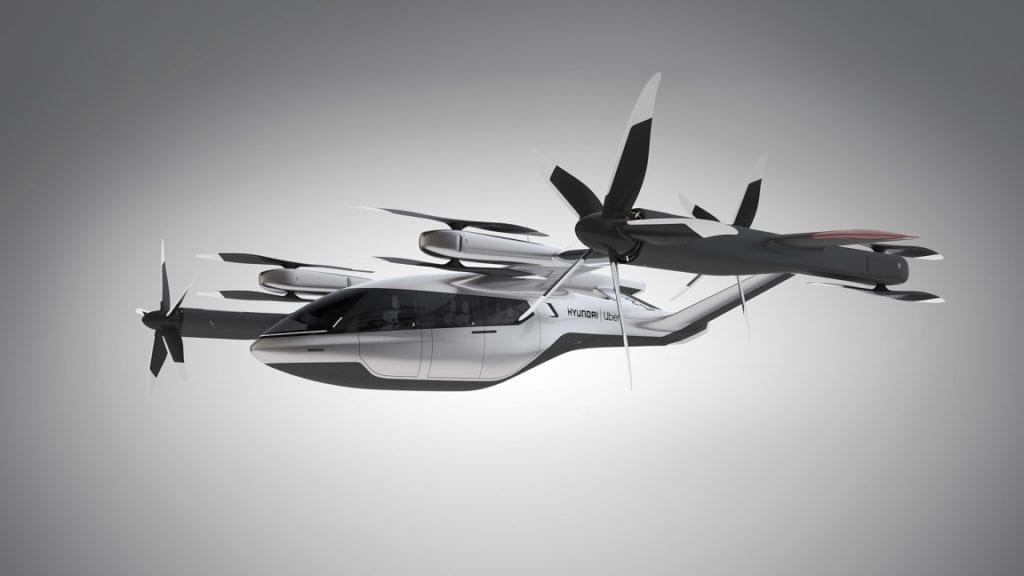
Hyundai added former FAA deputy administrator Michael Whitaker to its formidable urban air mobility team. Pictured here is a computer generated prototype for the electric air taxi design currently being researched and developed by Hyundai. Photo: Uber/Hyundai
South Korean automaker Hyundai continues to snap up talent for its urban air mobility (UAM) division, hiring Michael Whitaker, former deputy administrator of the Federal Aviation Administration, as its global head of policy.
Hyundai announced its entrance to the UAM space in October 2019, pledging to invest $1.5 billion towards development in the next few years and hiring longtime NASA aeronautics director Dr. Jaiwon Shin to lead the company’s new division.
Other key hires by Hyundai UAM include:
- Scott Drennan, former vice president of engineering innovation at Bell, now chief of R&D for Hyundai UAM
- Pamela Cohn, founder and managing partner of Ascension Global, now vice president and head of global operations and strategy at Hyundai UAM. (The automaker brought the rest of Cohn’s team at Ascension in-house as well.)
- Diana Marina Cooper, former senior vice president of policy and strategy at PrecisionHawk, now head of U.S. policy at Hyundai UAM
In January, Hyundai unveiled its S-A1 vehicle concept and partnership with Uber’s Elevate ecosystem at the annual Consumer Electronics Show, though its strategy expands beyond providing vehicles to external operators. At CES 2020, Dr. Jaiwon Shin shared a vision for linked aerial and ground mobility that included hubs and ground vehicles.
“Hyundai brings decades of highly safe and reliable manufacturing at scale, which positions us well to add value as a leading UAM vehicle developer and manufacturer. However, our strategy expands far beyond the vehicle itself. Hyundai’s vision is to build human-centered cities through innovative mobility solutions,” Pamela Cohn told Avionics International, adding that the company is working with policymakers and regulators across the U.S., EU and Asia-Pacific.
Hyundai is one of several automakers with declared UAM projects, likely understanding that peak sales of internal combustion engine cars are behind them and pursuing aerial mobility alongside other bets like autonomous driving and electric cars. Porsche, Audi and Daimler are among other auto-turned-aero players, and Toyota recently invested $394 million in another Uber partner, Joby Aviation, which intends to begin production of its electric VTOL aircraft in Marina, California.
“The aerospace industry should be very concerned about their disintermediation, or their obsolescence, by the auto industry,” Kirsten Bartok Touw, managing partner at AirFinance, told Avionics. “There has always been a question of whether advanced air mobility fits better with the auto industry or with aerospace. Aerospace folks argue that automakers don’t know how to meet aerospace levels of certification, but on the other hand, aerospace has no idea how to produce things in volume units. In a best-case scenario, we could be looking at production of up to 25,000 vehicles annually in this space. Aero manufacturers, at best, still don’t make a thousand per year.”
“So, I think what you’re seeing is an attempt by the auto industry to own this space, and that’s why you see so much investment by Toyota, by Daimler and other folks,” added Bartok. “And I believe the aerospace industry should be very, very scared.”